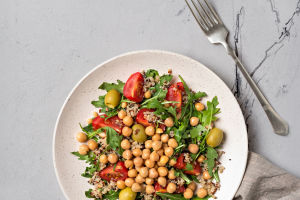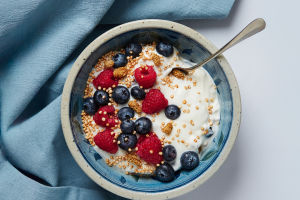Margherita pizza is proof that simple ingredients—when balanced just right—can deliver magic. With its crisp crust, bright tomato sauce, creamy mozzarella, and a touch of fresh basil, it’s a celebration of minimalism done well.
For Lykkers craving a go-to pizza recipe that’s easy to master and deeply satisfying, this guide takes you through each step like a friend cooking by your side.
Part 1: How to Make Margherita Pizza
Making pizza at home doesn’t mean trying to replicate a restaurant oven—it means using what you have to create something fresh, flavorful, and fun. This Margherita recipe keeps things classic, with a few helpful tips to make the most of your ingredients.
The Ingredients You’ll Need
(Makes 2 small pizzas or 1 large)
For the Dough:
All-purpose flour – 300g
Warm water – 180g
Instant yeast – 3g
Olive oil – 10g
Salt – 5g
For the Toppings:
Crushed tomatoes – 200g
Fresh mozzarella – 150g, torn into chunks
Fresh basil leaves – a handful
Olive oil – for drizzling
Salt – a pinch
Step-by-Step Process
Step 1: Mix the Dough
Start by adding the warm water and yeast into a mixing bowl. Stir gently, then add the flour and salt. Drizzle in the olive oil. Now, use your hand or a wooden spoon to bring everything together until a rough dough forms.
Step 2: Knead and Let It Rise
Once the dough is roughly combined, transfer it to a floured surface and knead it for about 8–10 minutes. You’ll know it’s ready when it feels soft and elastic. Place the dough in a clean bowl, cover it with a cloth, and let it rest for about 1 hour, or until it doubles in size.
Step 3: Preheat Your Oven
While the dough is rising, preheat your oven as high as it will safely go—usually 230–250°C (445–480°F). If you have a pizza stone or heavy baking tray, place it inside to heat up as well.
Step 4: Shape the Dough
Once your dough has risen, divide it in two (if making small pizzas) or keep it whole. Gently stretch it into a round shape on a floured surface. You don’t need a rolling pin—just use your hands and go slowly. Try to keep the edges slightly thicker for that beautiful pizza rim.
Step 5: Add the Sauce
Spoon the crushed tomatoes onto the dough and spread them out evenly, leaving a small border around the edges. You don’t need too much—just enough to coat the surface.
Step 6: Add Cheese and Bake
Tear the mozzarella into pieces and scatter them on top. Slide the pizza onto your hot stone or tray and bake for about 7–10 minutes, or until the crust is puffed and golden and the cheese is bubbling.
Step 7: Finish with Basil and Oil
Once it’s out of the oven, top your pizza with fresh basil leaves and a drizzle of olive oil. Slice and serve immediately while everything is warm and melty.
Part 2: Why Margherita Matters
The Story Behind the Name
Legend says Margherita pizza was named after Queen Margherita of Savoy in the late 1800s. Its red (tomato), white (mozzarella), and green (basil) colors mirror the Italian flag—a proud and flavorful tribute.
Choosing Quality Ingredients
With so few components, each one really shines. Use ripe canned or fresh tomatoes (no need for heavy seasoning), soft mozzarella (fresh is best), and fragrant basil. These elevate your pizza from decent to truly delicious.
Make It Your Own
Feeling adventurous? You can add sliced cherry tomatoes, a pinch of chili flakes, or even a bit of lemon zest to the sauce. Just keep it balanced—Margherita is all about harmony, not overload.
Kid-Friendly and Crowd-Pleasing
Margherita is perfect for picky eaters and flavor lovers alike. Kids can help stretch dough or sprinkle cheese, and it works as a weeknight meal, weekend treat, or shared dinner with friends.
Storage Tip
If you have leftover dough, wrap it and refrigerate for up to 2 days. Let it come to room temperature before using. Leftover pizza can be reheated in a pan (covered) for a crisp bottom and gooey top.
Margherita pizza is a timeless dish that reminds us how little it takes to create something truly memorable. It’s about slowing down, using good ingredients, and enjoying the process as much as the result. Whether you’re a first-time pizza maker or a seasoned baker, this recipe gives you a canvas—and a reason to savor every bite.
Lykkers, grab your dough and let the pizza party begin. Want to try a white pizza next? Just say the word.


